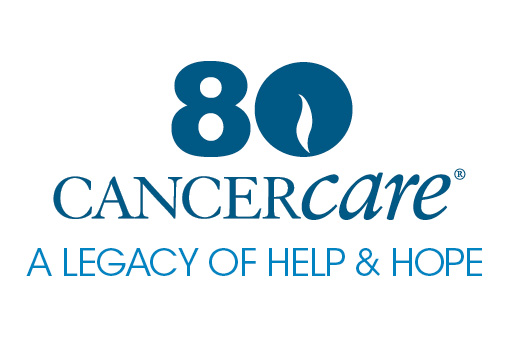Blood Cancers & Watchful Waiting
For Blood Cancer Awareness Month this September, CancerCare social worker Danielle Saff, MSW, LMSW, shares advice for those in a “watchful waiting” phase of their treatment.
 When a person is diagnosed with cancer, deciding on a treatment plan is a top priority. For many, especially those with solid tumors, common next steps may be surgery, chemotherapy or radiation. For certain types of cancer, including blood cancers, doctors may decide that watchful waiting is the best course of action.
When a person is diagnosed with cancer, deciding on a treatment plan is a top priority. For many, especially those with solid tumors, common next steps may be surgery, chemotherapy or radiation. For certain types of cancer, including blood cancers, doctors may decide that watchful waiting is the best course of action.
What Is Watchful Waiting?
Also known as “watch and wait,” the National Cancer Institute defines watchful waiting as “closely watching a patient’s condition but not giving treatment unless symptoms appear or change.” During the watchful waiting phase, a person may undergo regular tests and exams to monitor the progress of their cancer. Regular clinical visits make sure that the treating health care team has the information they need to decide when to move to active treatment.
For individuals who are not showing symptoms or have slow-growing types of cancer, watchful waiting can help maintain quality of life before the cancer progresses.
Talking to Your Doctor About Watchful Waiting
For clients who are anxious about watchful waiting, we always recommend sharing those feelings with your treating health care team. It is important to feel comfortable with your treatment plan, so you might ask your doctor to explain watchful waiting—or any other strategies—to you in more detail. Using “I” language can be helpful. Instead of saying, “You’re not treating me,” you may want to start with, “I feel anxious because I don’t know the benefits of watchful waiting. Can you explain why that is the best treatment option now?”
If you don’t feel comfortable asking your doctor about watchful waiting, or if you’ve expressed concerns but aren’t feeling heard, it may be helpful to get a second opinion. Trust and confidence in your treating health care team is vital. A second opinion can either reinforce your original doctor’s decision to pursue watchful waiting or provide alternate treatment options, if any.
Coping with Watchful Waiting In a traffic jam, some drivers may choose to take an alternate route even if it doesn’t save them any time—just to feel like they’re taking action. In a similar way, watchful waiting may feel like you’re not doing anything about your cancer. If this causes anxiety, you aren’t alone: it’s normal to feel that way. Here are a few techniques to try when you’re feeling overwhelmed:
In a traffic jam, some drivers may choose to take an alternate route even if it doesn’t save them any time—just to feel like they’re taking action. In a similar way, watchful waiting may feel like you’re not doing anything about your cancer. If this causes anxiety, you aren’t alone: it’s normal to feel that way. Here are a few techniques to try when you’re feeling overwhelmed:
4-7-8 Breathing
- How to do it: Breathe in through the nose for 4 seconds; hold for 7 seconds; and release through the mouth for 8 seconds.
- Feeling anxious may cause us to breathe rapidly, speak quickly or hold our breath entirely. This puts stress on our nervous system. 4-7-8 breathing can help you calm down when you notice yourself dwelling on unwelcome or intrusive thoughts.
- If anxious thoughts are still breaking through, trying adding a visual component. You can do this in your mind’s eye (imagine blowing through a straw) or by watching a video as a guide.
5 Senses Grounding Exercise
- How to do it: Name 5 things you can see; 4 things you can touch; 3 things you can hear; 2 things you can smell; and 1 thing you can taste.
- This grounding exercise uses your environment to help bring your attention to your surroundings. It can be helpful when you are unable to relax because your mind is racing. You may be thinking about things you did in the past, how you are feeling about watchful waiting now or what might happen in the future.
- We can sometimes get lost in our thoughts and in the story that we are telling ourselves. By focusing on our surroundings, grounding exercises like this can help us recalibrate and come back to what is actually happening and what we can ultimately have control over.
“Letting Go” Visualization
- How to do it: When you have an unwelcome thought, try to acknowledge it without judgment. Picture yourself in a peaceful place, then imagine writing that thought on a balloon and letting it float away into the sky.
- If the balloon imagery isn’t useful for you, you can also imagine releasing a toy sailboat downstream, pouring a cup of water into the ocean or letting a leaf fly into the wind. Whatever “letting go” means to you, you can use it as part of this exercise.
- This visualization is all about accepting our thoughts and trying not to judge them as good or bad. For example, I may think, “I am scared of what my next test results will be.” Instead of falling into a worst-case-scenario rabbit hole, or feeling weak about being scared, I can simply acknowledge that the thought is in my mind. That thought is normal and expected. I can think about it for a moment, and let it go. It may come back again in a minute, and that’s fine; I can simply accept and acknowledge the thought, then let it go again.
- Avoiding or repressing unwelcome thoughts can make them come back stronger. With this exercise, every time you let an idea go, it gets a little bit easier.
Whatever you are feeling, CancerCare is here to help. People living with cancer who are in a watchful waiting phase are still eligible for many of our free services. Speaking with one of our oncology social workers can validate what you are going through. We can also offer advice for how to better communicate with your care team and refer you to other local and national resources for support.
To learn more about our free services for those living with cancer, as well as for caregivers and loved ones, call 800-813-HOPE (4673). You can also view all of our materials for those affected by leukemias and lymphomas or find resources for your blood cancer subtype.
